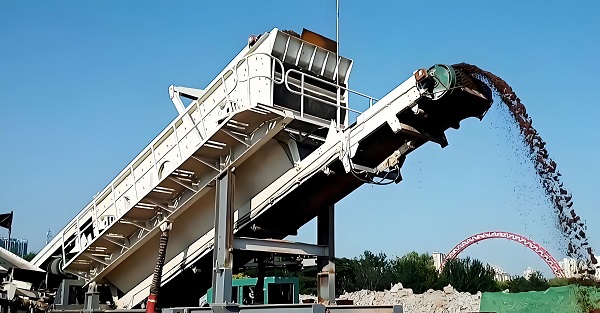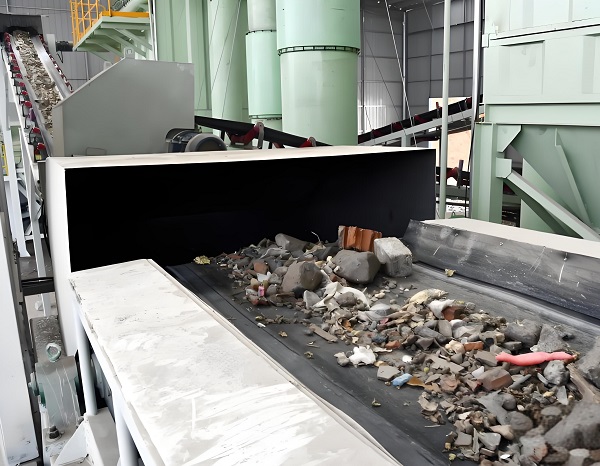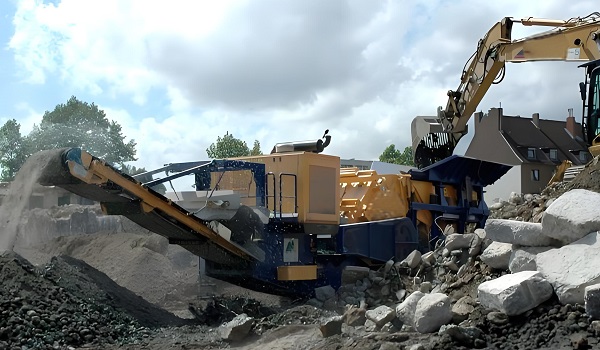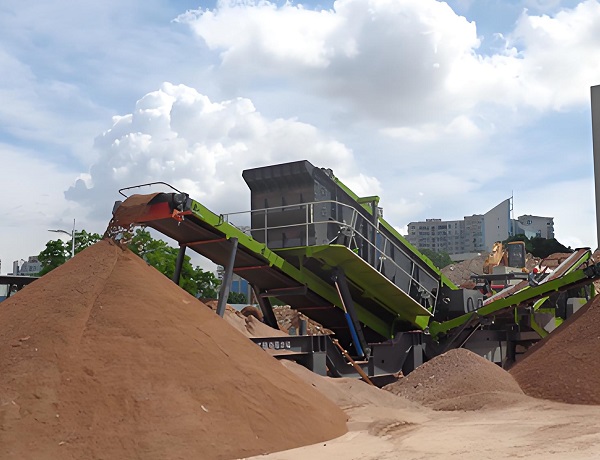Preface: The recycling of construction waste has a positive impact on environmental protection, resource conservation, economic benefits, and the improvement of social awareness and participation. The current status of construction waste treatment can be analyzed from the following aspects:
A. Current status of construction waste treatment

1. Huge output: With the acceleration of urbanization and the vigorous development of the construction industry, the amount of construction waste generated has increased significantly. The annual amount of construction waste accounts for more than 40% of the total urban waste, and is expected to continue to grow.
2. Low resource utilization rate: The resource utilization rate of construction waste is increasing year by year. The resource utilization rate of construction waste in developing countries is less than 5%, while the recycling rate of construction waste in some developed countries has reached more than 90%.
3. Technological progress and equipment application: With the introduction of intelligent and automated technologies, the efficiency and accuracy of construction waste treatment have been significantly improved. For example, intelligent classification systems, efficient transportation equipment, and advanced processing technologies have promoted technological progress in the construction waste treatment industry. Construction waste treatment companies have widely used crushers, screeners, mixers and other equipment to treat construction waste and produce high-quality recycled aggregates and building materials.
4. Imperfect industrial chain: The social industrial chain of construction waste disposal in developing countries is imperfect, and the collection, transportation, sorting and utilization links are disconnected. The generation, resource utilization and product application of construction waste have not been fully opened up, and disposal companies are often in an embarrassing situation of "not enough production and products cannot be sold", and many companies are unsustainable.

B. Prospects for construction waste treatment
1. Market demand growth: With the acceleration of urbanization and the continuous development of the construction industry, the amount of construction waste generated will continue to grow, and the demand for construction waste treatment will continue to increase. With the improvement of environmental awareness and the promotion of policies, the market demand for the resource utilization of construction waste will continue to grow.
2. Technological progress and industrial upgrading: With the continuous development of intelligent and automated technologies, the technical level and efficiency of construction waste treatment will continue to improve. The construction waste resource utilization industry will also continue to upgrade and improve, forming a more complete industrial chain and market mechanism.
3. Policy support and market mechanism: Relevant policies and regulations will continue to be introduced to promote the development of construction waste resource utilization, including financial subsidies, tax incentives, land supply and other aspects of support. The market mechanism will also be continuously improved, including the establishment of a market access system, price mechanism, and regulatory mechanism for the resource utilization of construction waste.
4. Challenges and opportunities coexist: Although the construction waste treatment industry faces many challenges, such as insufficient classified collection, backward resource utilization technology, low investment, and imperfect policies, regulations and measures, these challenges will be gradually resolved with the advancement of technology and the promotion of policies. The construction waste treatment industry will also usher in more opportunities, such as market demand growth, technological progress and industrial upgrading.

C. The recycling of construction waste has many impacts on society, mainly reflected in the following aspects:
1. Environmental protection: The recycling of construction waste significantly reduces environmental pollution. If construction waste is directly landfilled without treatment, it will occupy a lot of land resources and may pollute soil and water bodies. Through recycling, these wastes can be converted into useful resources and reduce damage to the environment.
2. Resource conservation: Construction waste contains a large amount of recyclable materials, such as steel bars, wood, bricks and stones. Recycling these materials can not only save a lot of natural resources, but also reduce energy consumption and production costs.
3. Economic benefits: The recycling of construction waste can also create economic benefits. Recycling companies can process recycled construction waste into recycled products, such as recycled aggregates, recycled bricks, etc., and sell them to construction companies or other industrial enterprises to gain profits.
4. Improved social awareness and participation: With the promotion and popularization of construction waste recycling, the public's awareness and participation in this environmental protection action will gradually increase. This will help to form a good atmosphere for the whole society to pay attention to and participate in environmental protection.

PS: The construction waste treatment industry has broad development prospects and huge market potential. With the advancement of technology and the promotion of policies, the industry will continue to upgrade and improve, and make greater contributions to the urbanization process and sustainable development.
Save Time! Get A Detailed Quotation Quickly.
